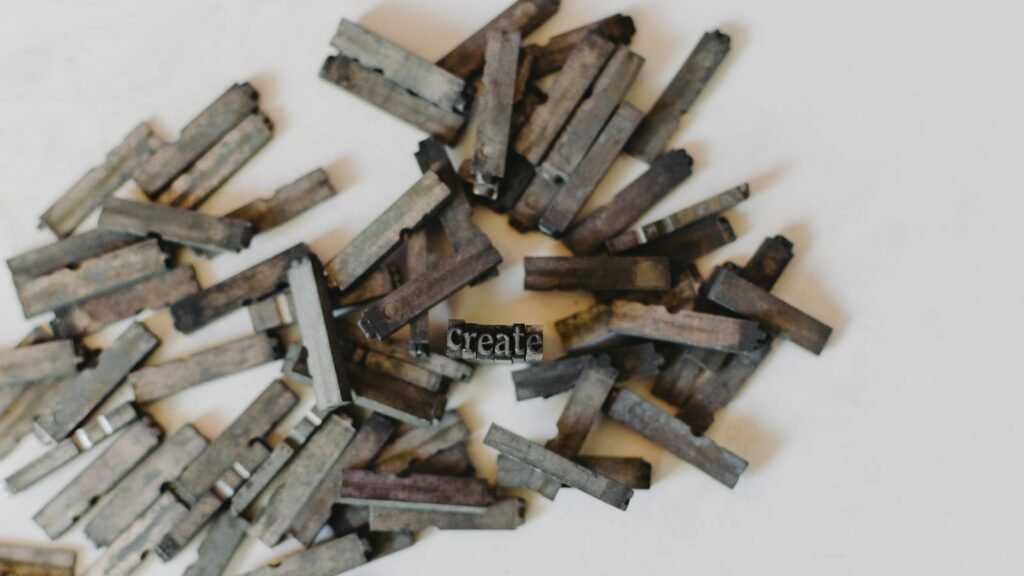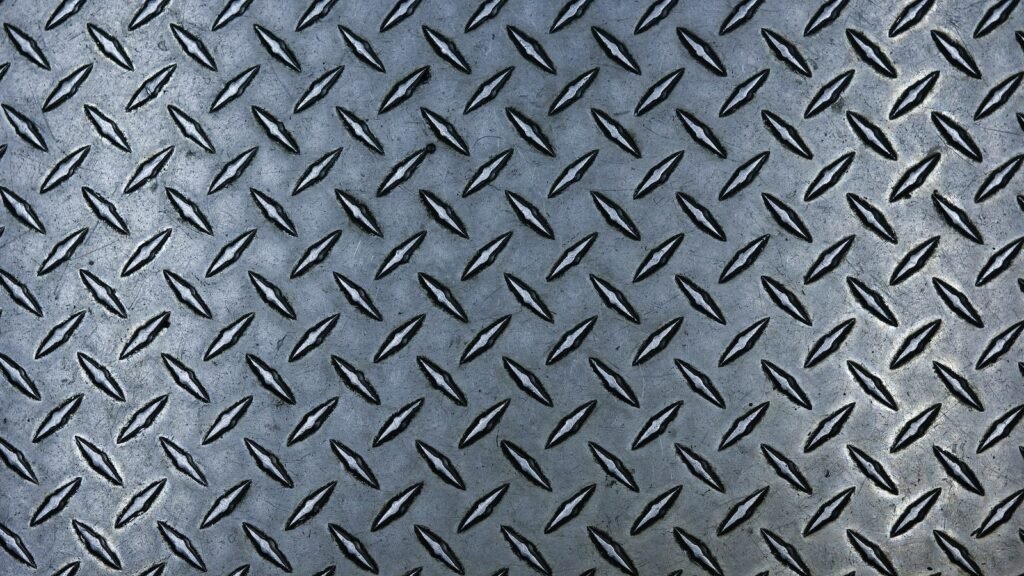Why does material matter in stamping? A brief overview of the pivotal role material plays in determining the success of a stamping project.

Material Properties Dictate Project Success
When embarking on a stamping project, one of the most critical decisions you’ll make is the selection of material. This isn’t a mere formality; it’s a decision that can make or break the success of your project. Here’s why:
- Strength and Durability: Imagine crafting a beautiful component, only for it to warp or break under minimal stress. The strength of a material determines its ability to endure external forces. Whether it’s the pressure of being stamped or the stresses it will face in its final application, the material must hold its shape and integrity. For instance, automotive parts require materials that can withstand the rigors of daily use without deforming.
- Malleability: On the flip side, while strength is crucial, so is a material’s ability to be shaped. Malleability refers to how easily a material can be stamped, bent, or formed without breaking or cracking. This is especially vital for intricate designs or when high levels of detail are required. A material that’s too brittle might shatter under the stamping press, leading to wasted resources and time.
- Corrosion Resistance: No one wants their stamped product to degrade prematurely. Corrosion, the gradual destruction of materials by chemical reactions with their environment, is a real concern, especially for products exposed to moisture, certain chemicals, or varying pH levels. For example, marine equipment or components used in chemical plants need materials that won’t rust or corrode easily.

Factors Influencing Material Choice
Selecting the right material for your stamping project isn’t just about knowing the different types of metals available. It’s about aligning your choice with the specific needs and constraints of your project. Here’s a deeper dive into the factors that should be on your radar:
- Project Requirements: This is the starting point. What do you want the final product to achieve? If you’re creating a component for an aerospace application, you might prioritize materials that have a high strength-to-weight ratio. If it’s for a decorative item, appearance and finish might be more critical. For medical devices, biocompatibility becomes paramount. Always align the material’s properties with the functional requirements of the end product.
- Budget Constraints: Let’s face it; while we’d all love to use the best materials out there, budget often dictates our choices. Some metals, like gold or platinum, might be perfect for specific applications but can be prohibitively expensive. It’s essential to strike a balance between quality and cost. Sometimes, this might mean compromising slightly on certain properties or considering alloys that can offer a good mix of characteristics at a more affordable price point.
- Production Volume: Your project’s scale can also influence material choice. If you’re looking at a limited run, you might opt for materials that are slightly more expensive but offer superior properties. However, for high-volume projects, even a small cost saving per unit can translate to significant overall savings. Additionally, certain materials are more readily available in bulk, making them more suited for large-scale production.

Commonly Used Materials and Their Applications
When it comes to metal stamping, the material you choose can make or break your project. Here’s a closer look at some of the most popular materials in the industry and where they shine:
- Steel: Often hailed as the workhorse of the metal stamping world, steel is known for its strength and durability. It’s versatile, making it suitable for everything from automotive parts to construction materials. There are various types of steel, including stainless steel, which offers added corrosion resistance, and carbon steel, which can be heat-treated to enhance its strength further.
- Aluminum: If you’re looking for something lightweight yet strong, aluminum is your go-to. Its natural resistance to rust and corrosion makes it a favorite in industries like aerospace and automotive, where weight and durability are paramount. Plus, it’s highly malleable, allowing for intricate designs without compromising structural integrity.
- Copper: Beyond its beautiful reddish-brown hue, copper is prized for its excellent electrical conductivity. This makes it a top choice for electronic components, wiring, and circuitry. It’s also ductile and can be stamped into thin sheets without losing its properties. Additionally, its natural antimicrobial properties have led to its use in medical and sanitary applications.
- Brass: A blend of copper and zinc, brass brings the best of both worlds. It’s strong yet malleable, making it perfect for intricate stamping projects. Its golden appearance is often leveraged for decorative items, musical instruments, and hardware. Moreover, its resistance to corrosion and wear ensures longevity.
When selecting a material, it’s essential to consider not just its inherent properties but also how it aligns with the specific requirements of your project. Each material has its strengths, and understanding these can help you make an informed decision that ensures the success of your stamping endeavor.

Specialty Materials for Niche Applications
In the vast world of metal stamping, while some materials are popular for their versatility, others are chosen for their specialized properties that cater to niche applications. Let’s delve into some of these specialty materials:
- Titanium: Often dubbed the “space age metal,” titanium boasts an impressive strength-to-weight ratio. It’s almost as strong as steel but weighs about half as much. This unique combination makes it a sought-after material in the aerospace and medical industries. Its natural resistance to corrosion, even from saltwater, further adds to its appeal, making it a top choice for marine applications and surgical implants.
- Inconel: When you need a material that can take the heat, Inconel steps up to the plate. This superalloy, made primarily of nickel, chromium, and iron, is renowned for its ability to retain its strength even at extreme temperatures. It’s no wonder that it’s a favorite for parts in jet engines, turbines, and nuclear reactors. Inconel’s resistance to oxidation and corrosion also means it can weather harsh environments without a hitch.
- Nickel Silver: Don’t let the name fool you; nickel silver contains no actual silver. Instead, it’s an alloy of copper, nickel, and zinc. Its shiny, silver-like appearance makes it a popular choice for decorative items, jewelry, and musical instruments. But it’s not just about looks; nickel silver is also known for its resistance to tarnish and corrosion, ensuring that items made from it retain their luster over time.
When embarking on a stamping project with specific needs, it’s crucial to explore these specialty materials. They might come with a higher price tag, but their unique properties can make them invaluable for certain applications, ensuring the longevity and functionality of the final product.

Environmental and Sustainability Considerations
As we move towards a more sustainable future, the environmental footprint of our choices, especially in manufacturing, comes under scrutiny. When selecting materials for stamping projects, it’s not just about performance and cost anymore. The ecological implications play a pivotal role too. Here’s why:
- Recyclability: The ability to recycle a material at the end of its life cycle is a significant advantage. Aluminum, for instance, stands out in this regard. It can be recycled indefinitely without losing its quality, making it a favorite in industries aiming for a smaller carbon footprint. Steel, too, is highly recyclable, and recycling it uses 60% less energy compared to producing steel from raw materials. By choosing recyclable materials, manufacturers not only reduce waste but also conserve energy and resources.
- Sourcing: Where and how a material is sourced can have a profound impact on its environmental footprint. Materials that are sustainably mined or produced ensure that the environment isn’t harmed during extraction. For instance, conflict minerals, which are mined in conditions of armed conflict and human rights abuses, have come under global attention. Ethical sourcing ensures that materials are obtained responsibly, without causing social or environmental harm.
- Carbon Footprint: Some materials require significant energy during their production, leading to higher carbon emissions. By opting for materials with a lower carbon footprint or those produced using renewable energy, manufacturers can further reduce their environmental impact.
- End-of-Life Disposal: Materials that are hazardous or don’t degrade can pose environmental challenges when disposed of. Choosing materials that are either biodegradable or can be safely disposed of is crucial in minimizing long-term environmental harm.
Incorporating these considerations into material selection not only aligns with global sustainability goals but can also resonate with eco-conscious consumers, adding an additional layer of appeal to the final product.

Case Studies: Successful Material Selection in Stamping Projects
Material selection can make or break a project, especially in industries where precision, durability, and sustainability are paramount. Let’s delve into some real-world examples where the right material choice played a pivotal role in the project’s success.
- Tesla’s Use of Aluminum: Tesla, the electric car behemoth, has always been at the forefront of innovation. One of their masterstrokes was the decision to use aluminum for the body of their vehicles, especially the Model S. Aluminum, being lightweight, played a significant role in reducing the overall weight of the car. This reduction translated to increased energy efficiency, allowing the car to travel longer distances on a single charge. Moreover, aluminum’s corrosion resistance ensures the vehicle’s longevity, even in harsh environments. Tesla’s choice wasn’t just about performance; it was also a nod to sustainability, given aluminum’s recyclability.
- Apple’s Shift to Recycled Aluminum: Apple, a brand synonymous with innovation, made headlines with its commitment to sustainability. One of their significant steps in this direction was the decision to use 100% recycled aluminum in their products, starting with the MacBook Air and Mac mini. This shift not only reduced the carbon footprint associated with the aluminum’s production by nearly 50% but also set a precedent for other tech giants to follow. Apple’s choice showcased that sustainability and premium quality could go hand in hand.
Both these case studies underscore the importance of material selection, not just from a functional perspective but also from an environmental and branding standpoint. Making informed choices can lead to better products and a better planet.

Mistakes to Avoid When Selecting Materials
Material selection is a delicate balance of various factors, from cost to durability. However, even seasoned professionals can sometimes overlook crucial aspects, leading to costly mistakes. Here’s a rundown of some common pitfalls and how to navigate around them:
- Overlooking Material Costs: It’s easy to get swayed by the allure of high-end materials, especially when you’re aiming for a premium finish. However, the most expensive material isn’t always the best choice for every project. It’s essential to weigh the material’s benefits against its cost. For instance, while titanium might be perfect for aerospace applications due to its strength-to-weight ratio, it might be overkill (and over-budget) for a simple household item. Always consider the project’s budget and the material’s ROI. Tip: Conduct a cost-benefit analysis for each material under consideration. This will give you a clearer picture of which material offers the best value for your specific needs.
- Ignoring Long-Term Durability: When selecting materials, it’s tempting to focus solely on immediate needs. However, it’s crucial to consider the product’s entire lifecycle. A material that seems perfect now might degrade faster than anticipated, leading to increased maintenance costs or even product recalls. For instance, a metal that’s highly malleable might be easy to stamp but could be prone to dents and damage in the long run. Tip: Always factor in the environmental conditions the final product will be exposed to. This includes temperature fluctuations, potential exposure to chemicals, and physical wear and tear. Opt for materials that can withstand these conditions over the product’s expected lifespan.

The Future of Material Selection in Stamping
The realm of metal stamping, like many industries, is in a constant state of evolution. As technology advances and global priorities shift, the criteria for selecting materials are becoming more multifaceted. Here’s a glimpse into the future of material selection in stamping:
- Smart Materials: Imagine a material that can alter its properties based on external conditions. That’s the promise of smart materials. These are not just passive elements but active participants that can change shape, color, or even conductivity in response to stimuli like temperature, light, or pressure. For instance, in the medical field, implants made from smart materials could potentially release drugs in response to changes in the body, ensuring timely and targeted treatment.
- Eco-friendly Alloys: As the world becomes more environmentally conscious, there’s a growing demand for materials that are not only durable and efficient but also eco-friendly. Researchers are now developing new alloys designed with minimal environmental impact in mind. These materials aim to reduce the carbon footprint of production processes, be more recyclable, and minimize waste. For instance, some new alloys might use less energy-intensive metals or incorporate recycled materials without compromising on quality.
- Nanotechnology in Stamping: On the horizon is the potential use of nanotechnology in metal stamping. By manipulating materials at the molecular or atomic level, it’s possible to create metals with enhanced properties, such as increased strength or improved electrical conductivity. This could revolutionize the kind of products that can be made using metal stamping.

Making an Informed Decision
Choosing the right material for your stamping project isn’t just a technical decision; it’s an art. It’s about understanding the delicate balance between functionality, aesthetics, cost, and sustainability. As we’ve journeyed through the intricacies of material selection, one thing stands clear: the material you choose can make or break your project.
In the ever-evolving world of metal stamping, staying informed about the latest trends, technologies, and materials is crucial. But beyond the technicalities, it’s essential to remember the broader picture. Every material choice impacts not just the product’s performance but also our environment and society at large.
So, as you embark on your next stamping project, take a moment to reflect. Consider the long-term implications of your material choices. Prioritize quality and sustainability. And always keep the project’s core requirements at the forefront of your decision-making.

In the end, an informed decision is a powerful one. It’s the difference between creating a product that merely exists and one that excels. So, equip yourself with knowledge, ask the right questions, and let your material choices pave the way for success. After all, in the world of metal stamping, the material isn’t just a component; it’s the very foundation of your masterpiece.



